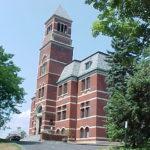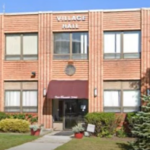Greene: “… a renewable energy economy …”
KINGSTON – Many local environmentalists spoke out against New York’s inclusion of nuclear power in the Department of Public Service’s new Clean Energy Standard policy. The comments came at a public hearing held Thursday at Kingston City Hall.
At issue is the inclusion of upstate nuclear power generating facilities, in what the department called “Tier 3,” of the Clean Energy Standard.
Public Service commissioners will be setting long-term policy goals concerning the issue at their next session in June.
The State Energy Plan (SEP), sprung from Governor Andrew Cuomo’s Revised Energy Vision (REV), calls for a goal of slowly bringing the carbon emissions down. Fifty percent of New York’s energy production must be renewable by 2030.
Public Service staff drafted a white paper outlining implementation of this plan, measured in three-year baby steps, starting in 2017. The short-term goals were deemed necessary due to the impossibility of predicting the market costs of various fuel sources, combined with the uncertainty of future technologies.
One area environmentalist, Manna Jo Greene, a key advisor to the Clearwater organization and an Ulster County legislator, said sustainable energy is the only way the state should go.
“What this does is prolong our dependence on nuclear power,” Greene said. “The only bridge to a renewable energy economy is renewable energy.”.
Carl Mas, NYSERDA energy and environmental analysis director, who worked on the white paper, explained that costs associated with upgrading the power grid are about $1.3 billion, representing roughly one percent of the average electric bill, or about $1 per month for most people. This price tag is offset by an estimated $3 billion in benefits, measured by environmental damage caused by C02 emissions. “There are many other benefit categories,” Mas said.
Tom Rienzo of the state Public Service Department’s Office of Clean Energy, further explained the three-tier system, dividing New York’s future power grid into new renewables not yet online, older existing renewables, and nuclear power. These will be regulated through Renewable Energy Certificates (RECs), and Zero Emission Certificates (ZECs). Older options such as oil, coal and natural gas, are slated to be slowly phased out.
Rienzo noted that RECs and ZECs are tradable, with the possibility of both banking and borrowing, depending on the PSC’s decision next month, after public comment closes. Banking allows saving current production of renewable energy for future quotas, while borrowing refers to purchasing certificates which have not been created yet. The RECs will be market driven, while ZECs set by administrative policy, in an attempt to control energy market costs.
Other speakers argued that natural gas would proliferate under the no-nuke solution, to meet increasing market power generation demand, causing more C02 emissions and working against the “50 by 30” long term goals.
“Ultimately the Clean Energy Standard will be a balancing act,” said speaker Suzie Winter.







